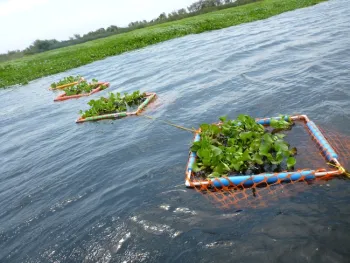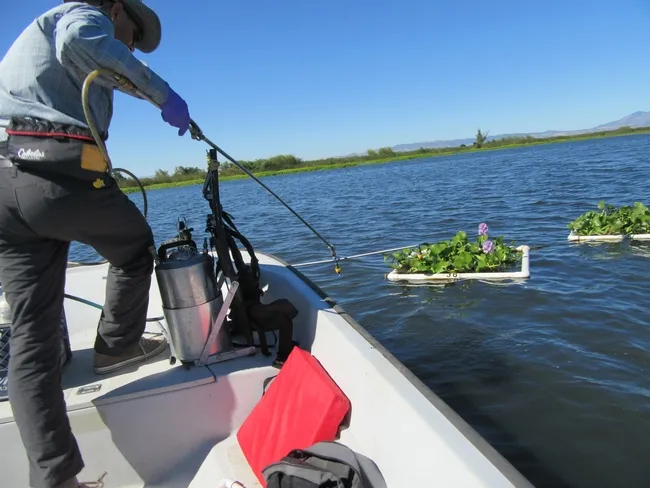In June 2016 the Madsen team revisited the site of our 2015 surfactant study to establish a more extensive test of aquatic herbicides for controlling waterhyacinth in the Delta.
Recall that in summer 2015 we established a preliminary trial to evaluate waterhyacinth response to different aquatic surfactants with glyphosate, using our famous floating quadrats with color-coded swim noodles (Figure 1).

By season's end, the crawdads had chewed up most of the swim noodles, so this year the quadrats underwent a slight redesign. We used thinwall 2” PVC, no noodles, and no fencing (Figure 2). (Calculating the enclosed volume and the weight per linear foot, we figured we had 8 to 10 pounds of ‘float' per quadrat.)

Since Agridex was the most effective of several surfactants tested last year, this was the only surfactant used this year. Treatments included 2 rates each of glyphosate, 2,4-D, imazamox, and penoxsulam. We laid out 40 one-square-meter quadrats, anchored in 8 groups of 5 (four reps), and planted them with waterhyacinth. Two weeks later, we returned to make the treatments (Figure 3). We will evaluate in late July.
This study is being conducted in cooperation with DRAAWP, the Delta Region Areawide Aquatic Weed Project.

